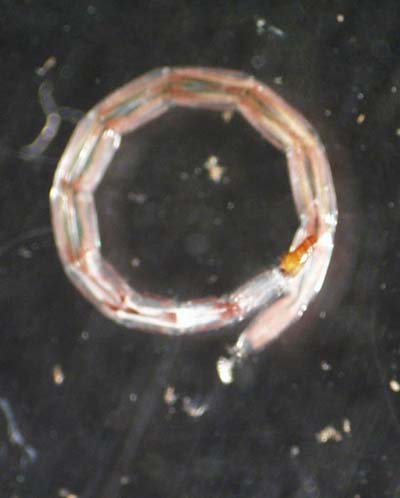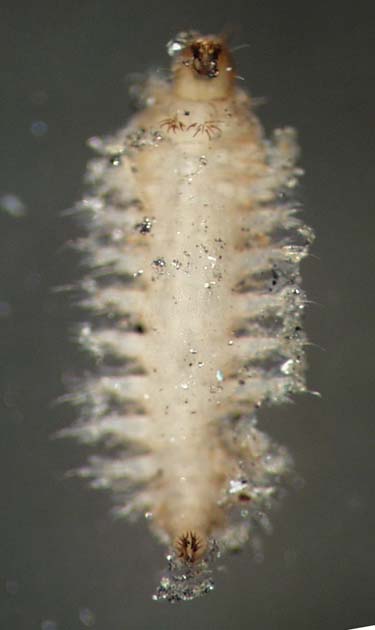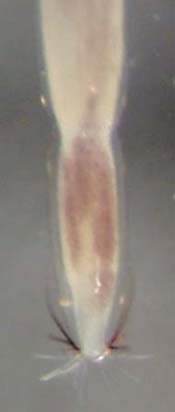
THE XERCES SOCIETY FOR INVERTEBRATE CONSERVATION Aquatic Invertebrates in Pacific Northwest Freshwater Wetlands |
| Identify taxa |
Ceratopogonidae (biting midges) |
Most people don't speak well of the biting midges, also known as punkies or no-see-ums, as adults are small enough to pass through window screens to inflict a painful itchy bite. But if you like chocolate, it might be worth knowing that these little pests also help pollinate cacao plants (as well as rubber trees) as adults, and the larvae can be important predators in stream ecosystems. Ceratopogonid larvae prefer standing or slow-moving waters and are commonly collected in wetlands; some are semi-aqautic and inhabit moist sand or mud. Larvae can be diverse, but the most commonly encountered types have a long, cylindrical, threadlike body with a distinct narrow head capsule; most lack prolegs. In the Northwest, the biting midges are represented by three subfamilies. |
Size: small to medium Identifying feature(s): long, threadlike body, slightly flattened Habitat: diverse fresh water; wetlands Tolerance to pollutants: moderate |
 |
|
© 2007 Xerces Society
Contact info@xerces.org




